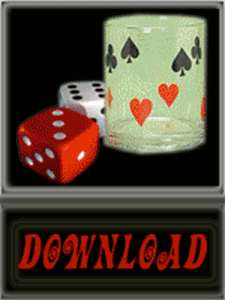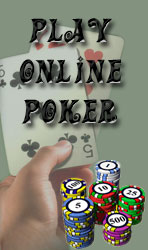Pokerwiner.com → Lessons of poker
CHECK-RAISING WITH A SECOND-BEST HAND
While you generally check-raise because you think you have the best hand, it is frequently correct to check-raise with a second-best hand if the play will drive other opponents out.
The principle here is identical to the principle of raising with what you think is the second-best hand's it was explained in Chapter Nine and Chapter Thirteen.
If the probable best hand is to your immediate right, you can check, wait for that player to bet, then raise so that the rest of the table will fold rather than call a double bet.
While you may not be the favorite, you have still increased your chances of winning the pot, and you have the extra equity of whatever dead money is in the pot from earlier betting rounds.
Sometimes you can check-raise with a come hand like a four-flush if there are many people in the pot odds already and you don’t expect a reraise, for you are getting good enough odds, especially if you have a couple of cards to come.
This play should usually be made only when the probable bettor is to your immediate left then the other players will call that bettor before they realize you are putting in a raise.
You do not want to drive players out because you want to get the correct odds for your raise.
Summary
The factors you must consider when you plan to check-raise are:
1. The strength of your hand.
2. Whether someone behind you will bet after you check.
3. The position of the probable bettor.
To check-raise with a hand with which you want to thin out the field, you want the probable bettor to your right so that people will have to call a double bet to stay in.
With a very strong poker hand and with most come hands, you want the probable bettor to your left so the other players in the hand might call that bettor’s single bet and then be invited to call your raise. (*For a discussion of check-raising when you are heads-up on the end, see pages 206-208.)



